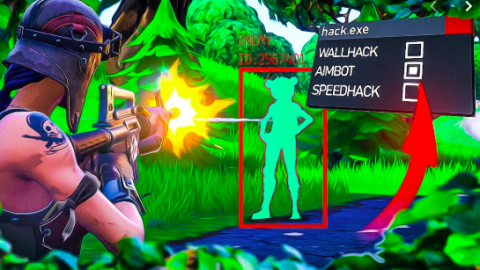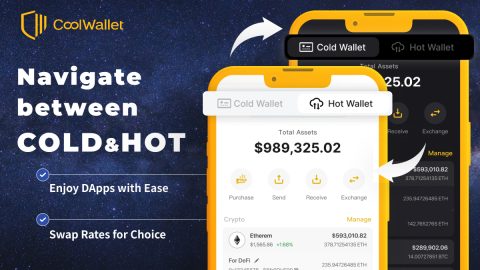Introduction
While it’s caught some flak the last few months for being boring (read: no price action) as layer-2 chains and rivals like Solana soar in value, the Ethereum blockchain is with good reason considered as the big daddy for the biggest innovations in Web3. It’s the original and has given birth to smart contracts, decentralized applications (Dapps) and hundreds of thousands of blockchain tokens of many types that still reside on it thanks to its unrivalled decentralization and security.
Until now, tokens have fallen into two distinct categories – fungible (ie. normal crypto tokens, ERC20 standard, e.g. all $LINK tokens are the same) and non-fungible tokens (NFTs, based on ERC721 and ERC1155 standards), which are by design one of a kind. As a result the NFT market went completely Bored-Ape sh*t during 2021’s bull run as everyone tried to get their hands on the next Beeple. Soon enough though, the market downturn in 2022 showed NFT traders the ills of their crypto JPEGs: illiquid markets and a host of other problems.
A new token standard, still in its very early days, aims to democratize and fractionalize NFT ownership, making it much easier to trade. It’s unleashed a storm of hype in 2024’s trigger bull market trading, seeing some of its earliest projects 6x in days to a value of over $25,000.
Here’s how ERC404 works and what it could mean for NFTs and DeFi.
ERC404: A New Hybrid Standard is Born
ERC404 is a new token standard that combines attributes of both fungible and non-fungible tokens into a single hybrid token. This opens up exciting new possibilities in the world of crypto tokens and decentralized apps.
In the simplest terms, ERC404 tokenizes non-fungible tokens (NFTs). This means each NFT can also be traded as a fungible token on decentralized exchanges (DEXs) while still retaining its non-fungible identity.
Why is ERC404 Revolutionary?
ERC404 represents a leap forward for NFT interoperability, liquidity and accessibility:
- Increased liquidity – Being able to trade NFTs as fungible tokens on DEXs massively increases liquidity. This solves a major limitation with existing NFTs.
- Accessibility – The ability to own a fraction of an NFT lowers the barrier to entry for high-value NFTs. This also expands the potential investor and collector base.
- Interoperability – ERC404 tokens can interact seamlessly with protocols in both the fungible token and NFT spaces, merging these previously disconnected areas.
- Programmability – As Ethereum smart contracts, ERC404 tokens open up new possibilities for NFT gamification, breeding, fractionalization and more.
A Short History of ERC404
The ERC404 standard was first proposed in early 2023 by the team behind the Pandora NFT collection, one of the earliest projects to make use of this new standard. Since then, ERC404 has seen swift adoption by other ambitious NFT projects seeking to leverage its advantages. By mid 2023 over a dozen ERC404 projects had emerged, with more launching on a regular basis.
As often happens with pioneering technology, wider understanding of ERC404 is still relatively low. However it seems poised to become more prominently recognized within the wider Ethereum community as familiarity spreads. If its current trajectory continues, ERC404 may very well replace ERC721 as the gold standard for NFTs within the next one to two years, in no small part due to its ability to bring real liquidity to crypto collectibles.
How ERC404 Works
The ERC404 standard creatively mixes elements from the ERC-20 and ERC-721 standards into an innovative hybrid model:
- Like ERC721, each ERC404 token has a unique ID and metadata that makes it non-fungible.
- Like ERC20 tokens, ERC404 tokens are freely transferable and divisible into fractional amounts.
When an ERC404 token is minted, a unique NFT is generated based on programmed rarity metrics. This NFT can then be freely traded as a fungible token. If the fungible token is burned, the linked NFT is destroyed.
For example, when a full PANDORA token is purchased on an exchange, a corresponding Replicant NFT is minted to the buyer’s wallet. Conversely, selling a PANDORA token results in the burning of its connected NFT. This mechanism allows for the trading of NFT rarities and encourages engagement through the “re-roll” of Replicant traits, adding a unique dynamic to NFT trading.
This mechanism connects the scarcity and collector value of NFTs with the liquidity and accessibility of fungible tokens in a creative way.
Comparing ERC404 to Other Standards
ERC721
ERC721 requires each token to be traded directly token-to-token. This provides no fractionalization and requires locating a specific buyer for each token. Suffers from serious liquidity issues.
ERC1155
This NFT standard enables batch minting and transfers of both fungible and non-fungible tokens. However, does not allow interchangeability between these two formats through minting/burning. So does not achieve true hybridization.

DELIVERED EVERY WEEK
Subscribe to our Top Crypto News weekly newsletter
ERC20
The ERC-20 token standard is a set of rules that apply to all tokens operating on the Ethereum blockchain. It defines a common list of rules that Ethereum tokens must follow, allowing them to be easily exchanged, transferred, or used within Ethereum’s ecosystem. This standard ensures compatibility between the various tokens issued on Ethereum, enabling them to interact seamlessly with smart contracts and decentralized applications (DApps).
The Impact of ERC404 on NFT Trading
ERC404 projects are kicking off all over Ethereum, as well as other chains like Solana and Arbitrum and even Bitcoin. In fact, it’s quite reminiscent of last year’s Bitcoin Ordinals and BRC20 explosion in terms of social media coverage and hype.
ERC404 has the potential to disrupt the NFT space in the following ways:
- Increase mainstream adoption by improving accessibility and liquidity.
- Enable new functionality like leverage trading and options contracts for NFTs.
- Bridge the gap between fungible tokens and non-fungibles.
- More seamless integration between DEXs, NFT marketplaces and DeFi platforms.
- Open up avenues for innovation in areas like Metaverse interoperability and composability.
Pros and Cons of ERC404
Let’s weigh up the good and bad about ERC404 really quick. While it’s certainly innovative, hackers and scammers love complex new developments in smart contract functionality that they can exploit to steal and pillage. Therefore, while it comes with great potential, it also carries significant risk at present, least of all turning your beloved NFT into digital ash.
Pros
- Greatly improved NFT liquidity.
- Lowers barriers to high-value NFT investing.
- Enables new models for NFT platforms.
- Built on secure and decentralized Ethereum infrastructure.
Cons
- Code has not yet been extensively audited.
- Possible vulnerabilities around burning linked NFTs.
- Additional complexity around wallet management.
- Regulatory uncertainty.
Current Top ERC404 Projects
Some of the top ERC404 projects leading the way include:
- Pandora – The first ERC404 project and pioneer of the standard.
- Azuki – Iconic NFT collection that adopted ERC404 in late 2023.
- Imagination – Ambitious metaverse NFT project leveraging ERC404.
- Recvlt – Digital sneaker startup building an ERC404 marketplace.
- Kaiju Kingz – Leading monster battle NFT game implementing ERC404.
ERC404 projects quickly mopped up $87 million volume on DEXs like Uniswap while accruing under $1 million on NFT marketplaces.
ERC404’s first implementation was through Pandora’s Replicants NFT collection with strong price gains from 0.38 ETH to 4.26 ETH, placing the collection in the top 15 by diluted value at $88 million. These numbers may well be outdated by the time this article is published.
Additional projects adopting ERC404 include Blur integrating support within two days, Telegram trading bot BananaGun newly announcing integration, and several other upcoming NFT releases like Web3 social media protocol Farcaster planning implementation. And we’re not slowing down.
Warning: Please note that CoolWallet doesn’t officially endorse or support any of the above projects, and all content is for educational purposes only. Please be careful which projects and Dapps you interact with, especially if they’re still on the experimental side.
The Bottom Line
ERC404 possibly represents the next major evolution in NFT functionality and interoperability. By enabling dynamic and upgradeable NFTs, it unlocks vastly more flexibility and use cases compared to older standards. If not ERC404, then eventually another standard will crack it, as the use case is just too big.
Once launched officially, ERC404 could revolutionize what NFTs can represent and how they integrate with other DeFi protocols. The standard promises to take NFT adoption to the next level across industries like gaming, art, finance, and more. While ERC404 remains unaudited at present, if it gains enough traction and passes all security hurdles you could very likely see it supported by CoolWallet in the future.
Exciting times lie ahead!




